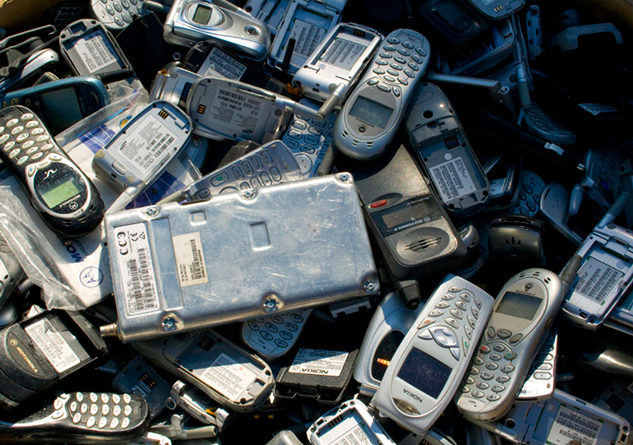Roddy Scheer & Doug Moss
EarthTalk
As more and more of the world develops—and smartphones become ubiquitous—electronic waste (AKA “e-waste”) is a bigger problem than ever. Around the world, people generate some 50 million tons of e-waste every year, much of which ends up improperly disposed of in landfills where toxins common in electronics like lead, mercury and cadmium can leach out and contaminate surrounding soils and groundwater. Much of the remaining e-waste gets shipped off to developing countries happy to profit from taking others’ trash despite the environmental consequences, or even worse, just dumped illegally into the ocean.
But thanks to consumer pressure to do the right thing, most major electronics manufacturers have started to pay attention to the problem and take action to reduce the flow of e-waste. Apple, for instance, long targeted by Greenpeace and others for lack of concern about the environmental and health impacts of its sourcing and production processes, has made great strides in the last five years in recovering customers’ old products and reusing the constituent parts in new products.
In 2015 alone, the company collected some 90 million pounds of Apple-branded e-waste, recovering upwards of 61 million pounds of material, including steel, plastics, glass, aluminum, copper, cobalt, zinc, lead, nickel, silver, tin and gold, to re-incorporate into new products. Environmental advocates who love their iPhones can sleep easier knowing that lead, mercury, beryllium, arsenic, PVC, phthalates and brominated flame retardants (BFRs) are no longer welcome in or will soon be phased out of Apple’s supply chain.
But most of us upgrade our smartphones every two years, so that means that even today’s greener iPhones still contribute to the e-waste problem. That’s where Europe’s Fairphone comes to the rescue. By incorporating long-lasting design and fair-traded materials, ensuring good working conditions and making products that are fully recyclable, easy-to-fix and reusable, Fairphone hopes to revolutionize the smartphone market with its eco-conscious products.
As the electronics industry matures and moves toward more sustainable components, that combined with better design can also help reduce the steady stream of e-waste. For instance, researchers at Lawrence Livermore National Laboratory have come up with a way to extend the life and boost the productivity of lithium ion batteries—the standard power source in today’s electronics—by treating their electrodes with hydrogen. Such a development could be huge for preventing e-waste, given that most of us toss our old phones within two years when the battery inside starts to deteriorate and underperform.
Choosing carefully when it comes to selecting your next smartphone and recycling your old one for free at BestBuy or through its manufacturer are important first steps in becoming part of the solution to the growing problem of e-waste. Becoming an advocate by encouraging others to do the same is another way to greatly expand your positive impact. The non-profit e-Stewards program is dedicated to teaching people how to deal with used electronics—and individuals can pledge to become one of the program’s Envoys to help spread the word about the importance of reducing e-waste.
CONTACTS: Apple. www.apple.com; Greenpeace, www.greenpeace.org; Fairphone, www.fairphone.com; e-Stewards, www.e-stewards.org.
EarthTalk® is produced by Roddy Scheer & Doug Moss and is a registered trademark of the nonprofit Earth Action Network. To donate, visit www.earthtalk.org. Send questions to: question@earthtalk.org.






